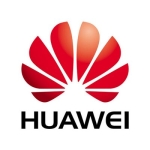What is our primary use case?
Our use case for on-premises is to improve performance. In our data center, we're using FlashSystem 9150s. We have two of them. In our customer projects, we have over two dozen of every model installed, including the 5200 and the 7200. So, we have the complete range of FlashSystems installed.
It can be deployed on-prem, on a public cloud, or in a hybrid cloud combination derivative. The cloud provider can be AWS, Microsoft Azure, and of course, IBM Cloud.
How has it helped my organization?
It improves performance 2:1 or better. It also saves space by 80%. It takes only about 20% of the space that prior generation products took.
It uses about 85% less energy, which is a big deal, and it also protects against cyber threats and ransomware.
When it runs on the virtual machines in the public cloud, or it runs on-premises, you get about three times the capacity in the public cloud than you would get by using the storage that a cloud provider offers. It is not a well-known secret, except for the people who have to pay the bills for storage in the public cloud. Public cloud storage is very expensive. It is much more expensive than storage on site. So, being able to reduce the cost of public cloud storage by two-thirds is a big deal, and this product allows you to do that, which is an advantage.
It is smaller, and it uses less energy. It puts less into the data center, which is a big deal. Heat is a big issue in data centers, and the larger the data center scales, the more is heat. Because there are no moving parts and no motors, and they use so much less electricity, these systems don't dump a lot of heat into the computer room. That is really important because as your data centers scale-out as companies grow, the heat in the data center starts to limit the ability to have air conditioning power and the amount of storage you can put in the data center. One of the big advantages of this technology is that it runs so cool and uses so little power. I've walked in a lot of data centers, and people have fans running to even off hotspots, and they're running big chillers. There is one data center nearby, and when you get within a block or two of that, you can hear the cooling systems. The cooling systems are taller than the building. They're in a big, chain-link cage mounted out in the parking lot, and they're just roaring all the time trying to take the heat out of the data center. The best way to solve that problem is not to put the heat into the data center in the first place.
What is most valuable?
A key feature is that compared to storage systems that we've been familiar with over decades, IBM simply does not fail. The reason is that IBM is the only manufacturer that engineers its own flash module, and there is a key architectural difference from everything else that we have seen in the market. The difference is that the flash module has the computational capability, which allows reliability and capacity enhancements to be uploaded from the main controllers and run in each module. So, each of the flash drives becomes its own little storage system, and that is extremely effective architecture. In this field, with this type of system, IBM has made a statement. They've never had one of these modules cause an outage. So, the failure rates on these things are just in a whole different universe from what we were accustomed to. With hard drives, you have to plan on failures consistently, and you have to have rebuilds going on. Hard drives are mechanical, and they fail. With normal flash products, you still have failures because flash wears out when you write to it. It's part of the flash technology, but with IBM's technique, we're able to get the advantage of the flash storage without the reliability and rebuild issues that we had with other flash storage. So, it is extremely effective.
What needs improvement?
I'd like to see more ports, although we have found ways of working around it. It's a bit limited on ports for most users. We use it with fiber channel and VME connections. The ports are fiber channel or iSCSI. Everybody uses it, which means running storage over IP connections. The advantage is you can run over an internet protocol (IP) connection.
I'd like to be able to connect to tape drives behind the storage device to back up the tape if need be. We have all of our storage running in all-flash, and we make a copy on tape. Currently, when we want to hook up tape drives, we have to add some extra equipment, which is a little bit complex. We want IBM to add a feature where we could install a tape into the storage so that we can connect it through a single pane of glass. We'd like to have a feature in the IBM flash storage system so that we can connect backup tape drives through the IBM storage system and we can manage the backup tape from the storage system. We have got all this data in our storage system, but there are a lot of bad people in the world, and they go around corrupting things with ransomware acts and other things. So, we make a full copy of the data on the tape. The tape then goes and sits in a secure storage facility. If something goes horribly wrong, we bring that tape out, we erase all the bad data that was corrupted, and then we lay down our clean data from the tape, and we're back in business. For example, the City of Baltimore was held on ransom for months a couple of years ago. They didn't have that facility. They didn't know how to do that, whereas we do our best practice and we back up all our data to tape, and then that tape gets stored somewhere else so that the bad people can't come in and do ransomware on us.
Buyer's Guide
IBM FlashSystem 9100 NVMe
December 2025
Learn what your peers think about IBM FlashSystem 9100 NVMe. Get advice and tips from experienced pros sharing their opinions. Updated: December 2025.
879,310 professionals have used our research since 2012.
For how long have I used the solution?
I have been using this solution for about 18 years.
What do I think about the stability of the solution?
Its stability is excellent.
What do I think about the scalability of the solution?
There are a limited number of slots, and if you fill those slots, you're going to have to add a second one of these. That's the bad news. The good news is when you do add the second one, you can cluster them and manage them in a system, but it does have a limited number of slots. I don't know if that's a fair criticism because most of the storage systems have that.
In terms of its usage, we probably have over a dozen user project sites, and that represents about 30 systems in total. We have several installations at federal government sites.
How are customer service and support?
Nobody does that better than IBM. They have excellent technical support. I would rate them a four out of five.
Which solution did I use previously and why did I switch?
Before 9100, we used the IBM systems with spinning disks, and they were reliable, but when we saw the flash systems come along with enhanced reliability, compression ratio, and performance, we switched over. We never looked back.
How was the initial setup?
It is very easy. We have a few novices, and it is extremely easy. What it comes with today, it didn't have years ago. In the current version, it has all the defaults, meaning you can plug it, and it will immediately satisfy a typical user. There is fine-tuning because when you take a generalized configuration, it is not applicable everywhere. So, there might be a setting that is typical and is good for the majority of cases. Once you get it installed, you can start looking at the defaults, fine-tune it a bit, and tweak it a bit. Because it comes with all the defaults on it, you could basically plug it in and use it. It is very easy to install.
The product is easy to install, but the data is hard to migrate. That's because when you have any data that lives on existing systems, the data has to be migrated from existing storage. So, the installation part is relatively simple, but how you get the data over from the existing storage can be challenging because you can't have a company go offline while the data is being moved. With the product, IBM provides a data migration facility to simplify the migration and allow applications to stay online while the data is being migrated.
In terms of maintenance, the machine is extraordinarily easy to maintain. The maintenance of it is almost self-contained, and there are several reasons for that.
The first reason is that the modules simply don't fail. The major problem with disk maintenance has always been hard drives failing. Anyone who has had a laptop with a hard drive knows it can fail over time. That's why people back their data up, but with this new technology that IBM has introduced, the modules don't fail anymore. So, if the drives don't fail, the major maintenance issue with storage goes out of the window.
Another reason is that IBM provides proactive maintenance. If there is anything that looks out of sorts, they set up parts and service people to fix it before it actually causes a problem at the user site. They have a monitoring system that can see the error rates increasing before the error rates cause an outage. Because of that, it's on proactive maintenance, which is very helpful. When you do replace something, it's just a plugin module, and it doesn't impact the application. So, it will continue to run during the maintenance, and that's really helpful. It is called concurrent maintenance, meaning you can repair something without causing an outage.
What's my experience with pricing, setup cost, and licensing?
It's a lot less costly than cloud storage. People get surprised by the cost of cloud storage, which is extremely expensive and four or five times the cost of storage on-premises. People don't realize what they're spending on storage until they start getting bills from Amazon, Microsoft, and others. This is a good way to reduce your cloud storage expenses.
Which other solutions did I evaluate?
We're authorized to use products from other companies, but it is just that there are so many compelling reasons to use IBM. It is a unique product. Nothing else in the market is quite like it. Sometimes, different isn't good, but in this case, different is good.
What other advice do I have?
My advice would be to keep the code current. Every four or five months, IBM has a code update, and I would advise others to keep their product current. You should basically set it, forget it, and enjoy it. People who run competitive systems would be shocked because it's so different, yet it's just hugely better than the stuff we've had in the past.
This is a good way to reduce your cloud storage expenses. Everybody is migrating to the cloud or thinking of migrating to the cloud, and truly, if the cloud was perfect, nobody needs a data center. You don't need your own electrical generation facility. You get power from the public utility that provides the power. Public cloud can also provide good storage capabilities, but we're at the beginning of that capability, and because it's imperfect and it's expensive, people still need data centers. We have to deal with the limitations of the public cloud, which are performance, cost, and complexity. If you're a business that can't afford to be down, do you really want to hand that to some third party? That's why the credit card companies and the financial service companies and people who have to be online 24/7 worldwide don't run those things in the cloud. They run them in on-premise data centers. On the other hand, a lot of customers are migrating to the cloud or are somewhere in the journey. They are either at the beginning of the journey or in the middle of that journey. For them, this is a big help because they can run in the hybrid mode so that things that make sense in the cloud are in the cloud, and the things that make sense on-premises are on-premises.
I would rate it a nine out of 10. The product is a game-changer. IBM changed the game architecturally by moving computational resources into the flash media. Different isn't always better, but in this case, it is. In the industry today, only IBM has a product with a true scale-out storage architecture. All other systems use media that is just a big cousin to the media in your laptop. It just stores data. IBM not only stores data, but it also has the computational resource that does compression, reliability, and deduplication.
Disclosure: My company does not have a business relationship with this vendor other than being a customer.

















